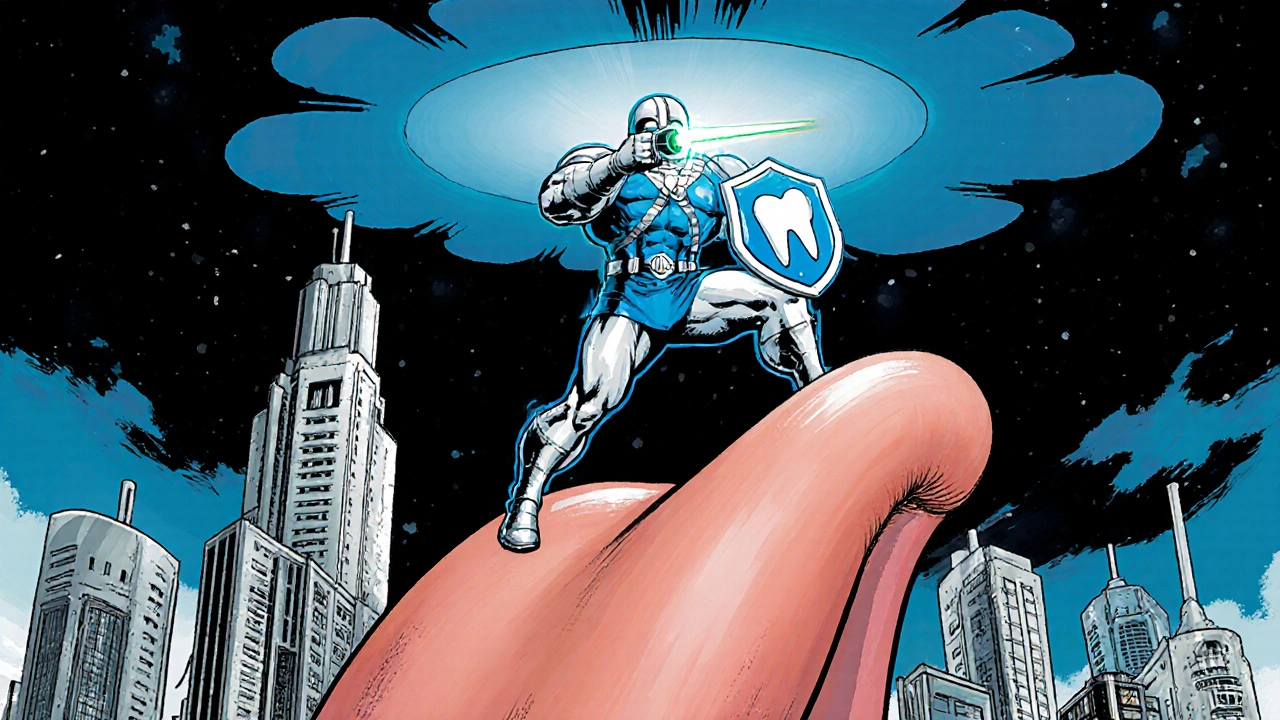Learn how prophylaxis-lifestyle changes, HPV vaccination, dental screening, and chemoprevention-can dramatically lower the risk of oral cancer.
Oral Cancer Prevention: Strategies, Risks, and Early Detection
When talking about oral cancer prevention, the set of actions aimed at lowering the chance of developing malignant lesions in the mouth and throat. Also known as mouth cancer risk reduction, it blends lifestyle changes, medical checks, and public‑health measures. Oral cancer prevention starts with understanding what drives cancer in the oral cavity and then applying targeted habits that cut those drivers down. This page pulls together the most relevant facts, so you can see how each piece fits into a bigger safety net.
Key Prevention Pillars
One of the biggest pillars is tobacco use, any form of smoking or smokeless nicotine consumption that irritates oral tissues. It’s the single leading cause of oral cancers worldwide, and the risk climbs with the number of cigarettes or chewed tobacco sticks you use each day. Cutting out tobacco isn’t just a recommendation—it’s a requirement if you want your odds to drop dramatically. Programs range from nicotine patches and gum to behavioral counseling, and many health systems now offer free quit‑lines. Each method works by reducing exposure to carcinogens, which in turn lowers DNA damage in cheek cells. The connection is clear: oral cancer prevention requires tobacco cessation, and the sooner you quit, the faster the oral lining begins to heal.
Another critical factor is HPV infection, a viral infection that can affect the throat and mouth, especially the tonsils and base of the tongue. Certain high‑risk strains, like HPV‑16, are now responsible for a growing share of oral cancers, especially in younger adults who never smoked. The good news is that a vaccine originally designed for cervical cancer also blocks the oral route of infection. Getting vaccinated before exposure—ideally in the early teens—creates immune protection that influences the later risk of malignant growths in the mouth. For adults who missed the vaccine, regular oral examinations can spot early HPV‑related changes, allowing prompt treatment before the disease spreads.
Nutrition rounds out the prevention toolkit. dietary antioxidants, compounds like vitamins C, E, and beta‑carotene that protect cells from oxidative stress are abundant in colorful fruits, vegetables, and green tea. Research shows that people who eat a diet rich in these compounds experience lower rates of oral epithelial mutations. Pair this with a low‑alcohol, low‑processed‑meat diet, and you give your mouth a biochemical shield against carcinogens. Alongside diet, routine oral health screening—often done by dentists during a clean‑up—acts as an early‑warning system. A quick visual check, sometimes aided by special lights or brushes, can catch precancerous spots (like leukoplakia) when they’re easiest to treat. Together, antioxidants, smart eating, and regular check‑ups encompass the lifestyle side of oral cancer prevention.
All of these pieces—quitting tobacco, getting the HPV vaccine, eating antioxidant‑rich foods, and staying on top of dental exams—form a comprehensive safety net. Below, you’ll find articles that dive deeper into each strategy, compare treatment options, and give step‑by‑step guidance you can apply right now. Use this collection as a roadmap to lower your risk and keep your smile healthy for years to come.

